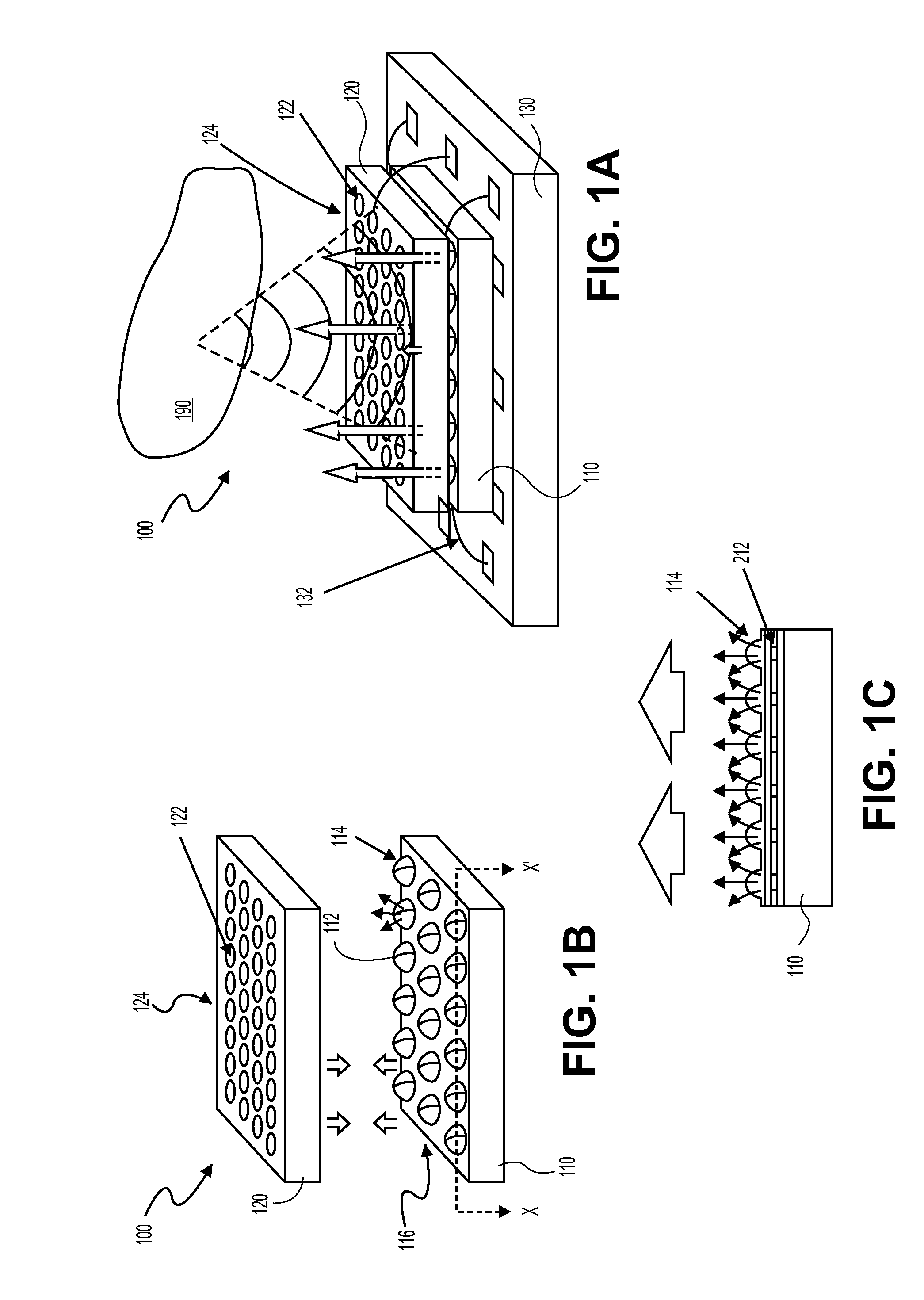Photoacoustic imaging devices and methods of making and using the same
a technology of photoacoustic imaging and imaging device, which is applied in the field of photoacoustic imaging, can solve the problems of inability to detect small tumors with diameters less than 4 mm at their earliest stages, unsuitable end user setup, and inability to perfect,
- Summary
- Abstract
- Description
- Claims
- Application Information
AI Technical Summary
Benefits of technology
Problems solved by technology
Method used
Image
Examples
Embodiment Construction
[0046]An exemplary embodiment of a photoacoustic imaging device with integrated arrays of infrared light sources and ultrasonic transducers is shown in FIGS. 1A-1C. According to various aspects of the disclosure, a photoacoustic imaging device 100 may comprise a first substrate 110 and a second substrate 120, with the second substrate 120 being stacked on the first substrate 110 and coupled to one another, for example, via wafer-to-wafer bonding. The stacked substrates 110, 120 may be electrically coupled with a printed circuit board 130 via bonding wire 132.
[0047]Ultrasonic transducers 122 may be integrated on the second substrate 120 in a one- or two-dimensional array 124. The second substrate 120 may comprise an infrared-transparent substrate such as, for example, silicon, glass, or polymer, such that infrared light illuminated from underneath the ultrasonic transducer substrate 120 can penetrate through the ultrasonic transducer substrate 120 and cast on target tissue without si...
PUM
 Login to View More
Login to View More Abstract
Description
Claims
Application Information
 Login to View More
Login to View More - R&D
- Intellectual Property
- Life Sciences
- Materials
- Tech Scout
- Unparalleled Data Quality
- Higher Quality Content
- 60% Fewer Hallucinations
Browse by: Latest US Patents, China's latest patents, Technical Efficacy Thesaurus, Application Domain, Technology Topic, Popular Technical Reports.
© 2025 PatSnap. All rights reserved.Legal|Privacy policy|Modern Slavery Act Transparency Statement|Sitemap|About US| Contact US: help@patsnap.com



